I have been working closely with tile contractors for more than 30 years. The diverse backgrounds and skills that so many of our members have amaze me, and it fascinates me to hear their stories on how they evolved into successful business owners.
In this month’s issue, I was able to catch up with two highly respected artists in our industry: Lee Callewaert of Dragonfly Tile & Stone Works in Grafton, Wis. and Joshua Nordstrom of Tierra Tile in Homer, Alaska. Callewaert was the recipient of the inaugural NTCA Tile Setter Craftsperson of the Year Award in 2019 for installation excellence, and Nordstrom exploded onto the scene in social media with incredible artistic installations that invoked peer respect and support. The two will collaborate with NTCA trainers at Coverings in April in New Orleans to offer a glimpse into the intricacies of their trade and they will share some insight into the skills they have honed over the years with attendees. NTCA is proud to sponsor their participation at Coverings.


Briefly tell me how you came to enter the tile trade and what background in your youth – either in the classroom or in the real world – helped prepared you for the success you have had?
Callewaert: I come from a long line of artists and my dad was an industrial contractor. I learned to work with tools at an early age. I had no idea what I wanted to do, but I knew I wasn’t interested in college. Young and dumb, I was introduced to a great guy (Dave Brown) who took me on and taught me the trade. I didn’t know where that was going but I was learning the craft and all that goes into it. Eventually I started looking at it differently. Quality craftsmanship is art. I found my passion.
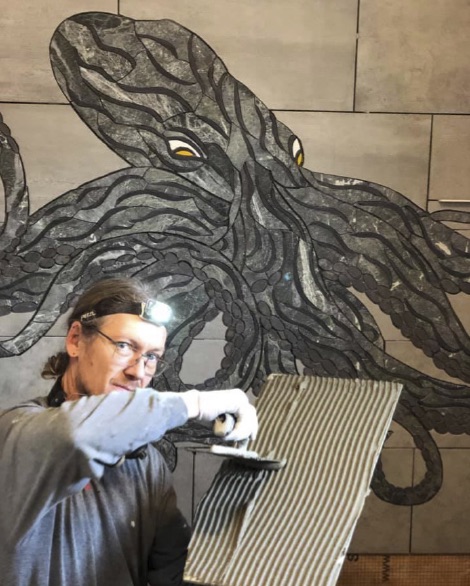

Nordstrom:I thoroughly enjoyed pottery class in high school, so upon graduation I purchased my first kiln. I had the opportunity to make some tiles for a friend’s entryway and quickly realized that there could be a market for handmade mosaic tile. I started off making tiles from scratch and firing them in my kiln. Over the course of a few years, I stumbled into setting tile and realized that if I became a tile installer, I could have better luck selling my art. A few more years went by and I stopped making my mosaics from scratch and started cutting factory-made tiles.
What is that you love most about being a tile contractor?
Callewaert: The challenge. It’s all about the challenge for me. Every project is different and unique. Bringing the best design and installation to each project feeds me.
Nordstrom: The part that I love most about being a tile contractor is that every job is different and has its own unique set of challenges. With that, the job never gets boring and always keeps you thinking and on your toes, literally. It is also the only trade I can think of in the whole industry that requires you to think creatively on a daily basis.
What are the biggest challenges that you face as a small business owner?
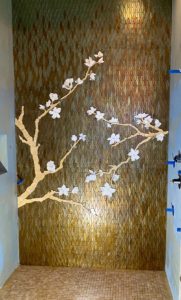
Callewaert: Initially for us, it was understanding all the nuances and unique requirements of our market, establishing our standards, and then staying true to that purpose. At this stage, I’m all about passing it on, training the next generation. Managing my projects to the standards we’ve set, WHILE training the apprentices and young setters can be a juggling act and there is cost involved.
Nordstrom: The biggest challenge for me by far is constantly learning the business side. The work and artistry come very natural but learning the aspects of how to run my business properly and profitably proves to be a constant learning curve.
About two years ago I changed from a sole proprietor to an LLC S corp. This has pushed a lot of new learning my way and I am trying to make sense of how all of the tax laws can benefit me and how it all works. I quit attempting to do my own taxes years ago and hired a professional. Every year I seem to be learning a little more.
Another challenge for me is that I have always worked by myself. I am looking at 2020 to be the year that I can hire an employee full time. The thought of this makes me a bit nervous knowing that it will be up to me to keep them busy and that I am ultimately responsible for their stream of income when mine has not always been steady over the course of my career.
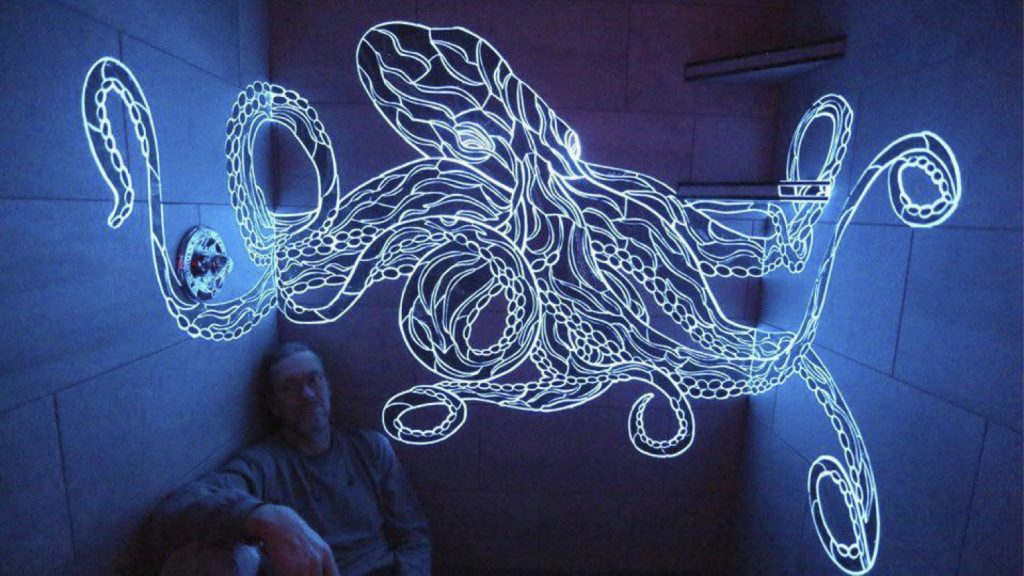

How do you use technology to successfully install your complex projects? Computer software, template designs, scribing and cutting equipment, etc?
Callewaert: I’m not a computer guy much. I draw pictures. Sketches with pencil actually appeal to many clients. We use templates for most of our designs. We fabricate our pieces using the template, then mount them and trace them onto the field for scribing. We use wet saws, grinders, ring saws, shapers and more, depending on the project.
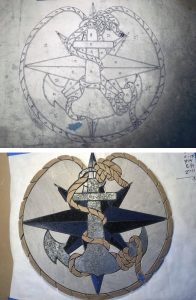

Nordstrom: My technology is prehistoric in modern terms. It consists of using a search engine to research a particular project and then drawing the design to scale on graph paper. I like to use an overhead projector to scale the design up to the project size. I do the majority of my cutting on my wet saw with the occasional grinder cut for the hard-to-reach places. I try to be really aware in the design phase and patterning on how I anticipate making my cuts being sure that they are all feasible. With advice from Lee, I have just acquired a new ring saw that is opening up new doors for me, turning previously impossible cuts into possible ones. This one tool alone can shave off hours on a single project and help me make more money in the end.
If a young person wanted to follow in your footsteps, what is the path you would recommend? Working for someone like you, business training or classes, internet-based training, apprenticeship training in a formal program, etc. or a combination of all?
Callewaert: It’s a combination of all. You have to have knowledge of proper prep and installation methods first and foremost, and an apprenticeship with a qualified contractor that incorporates hands-on, online learning like the NTCA University, as well as classes offered by industry partners are all important. But learning from a skilled installer is in my opinion, crucial. There is nothing like that real-world experience. This a craft. It has to be practiced.
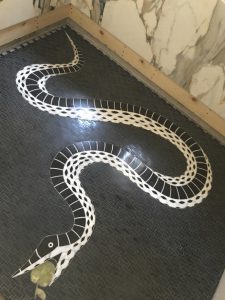

Nordstrom: I recommend for a person that wants to follow in my footsteps to start with small projects and work your way up from there. Don’t start off by attempting something really complex because you may find yourself getting frustrated throughout the process and may not want to try it again. Be willing to take some risks and to challenge yourself. Make some sample pieces to show your clients. Try making something for yourself or a friend or family member at a discounted cost. Save bigger pieces of tile scrap, these will come in handy for future mosaics and to keep your overhead costs down. Be willing to take advice from others and accept criticism, good or bad. Keep a portfolio and try to show it to every possible client. Find a bookkeeper and a tax person. Save every receipt. Pay attention to the business side of things. You can be the greatest installer and have plenty of work, but by not understanding the business and taxes all you’re going to be doing is treading water.
Bart Bettiga is the Executive Director of the National Tile Contractors Association. Bettiga is a member of the Board of Governors of Coverings, one the largest tradeshows in North America. He has over 30 years of experience in the tile and stone industry and has served as the NTCA Executive Director since 2002. He is a well known speaker and author on ceramic tile and natural stone distribution and installation. He oversees the financial operations of the NTCA, TileLetter and the Ceramic Tile Education Foundation.








